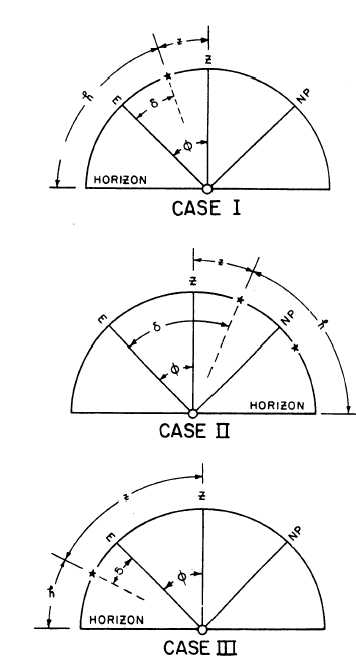Figure 15-12.-Three possible situations in determining latitude
by meridian altitude observation.
where:
@ = latitude of place
6 = declination of observed body
h = corrected observed altitude
CASE II. When the body observed is toward the
pole from the zenith, which is the case for circumpolar
stars, you can get the latitude of the place of observation
by using the following formulas:
0 = h f p. Use this formula only for circumpolar
star observations, where p is the polar distance
(90° - 6).
CASE III. When the equator is between the body
observed and the zenith, use the following formula to
get the latitude:
In the above situations, always remember that 6 and
@ positive when they are located north of the equator
and negative when south of it.
Latitude by Altitude
of the Sun at Noon
You can observe the altitude of the sun by two
methods. In the first method, you follow the sun just
before it is about to cross the approximate meridian. In
the second method, you set the line of sight of the transit
in the plane of a known meridian and wait for the sun to
cross the line of sight. At this instant take the reading of
the vertical angle. In either method your main objective
is to measure the sun’s altitude accurately. You should
know the exact time so that you can compute the instant
of local apparent noon. Then you will know exactly
when you should be in the field to have everything ready
just before the instant of observation.
If the instrument used is not a transit equipped with
solar prism attachments, set the horizontal cross hair
tangent to the lower edge of the sun’s disk. By the first
method referred to above, when you are observing for
maximum altitude, follow the sun until it no longer rises.
The moment the sun starts going down, record the
vertical angle and determine the index error. In the
second method above, the setting of the sun’s disk is
similar to the first method except that you get the reading
at the instant the sun crosses your known meridian. In
either method, you should correct the altitude observed
in the field for index error, semidiameter, parallax, and
refraction. You can eliminate index error in the second
method by plunging the telescope and taking another
reading as fast as possible.
The declination for the Greenwich time
corresponding to the instant of local noon is taken from
a table of the Nautical Almanac, the Solar Ephemeris,
or The Ephemeris. The table for May 1985, taken from
The Ephemeris, published by Bureau of Land
Management, U.S. Department of Interior, and prepared
by the Nautical Almanac office, U.S. Naval
15-15





